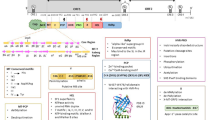Abstract
□Aim: Using structural bioinformatics methods, the aim is to assess the hypothesis that hepatitis C virus (HCV) encodes a glutathione peroxidase (GPx) gene in an overlapping reading frame, linking HCV expression and pathogenesis to the Se status and dietary oxidant/antioxidant balance of the host.
□Methods: The putative HCV GPx gene was identified by searching viral sequence databases, using conserved GPx active site sequences as probes, giving particular weight to the UGA (selenocysteine) codon. Multiple sequence alignments were generated and analyzed to validate the sequence similarity, and to establish the degree of conservation of the identified genomic features in HCV. Molecular modeling was used to assess the structural feasibility of the proposed homology.
□Results: The GPx homology region overlaps the NS4 gene, and is well conserved in HCV. The sequence similarity of the conserved active site regions to a set of known GPx is high (4 to 6 SD greater than expected for similar random sequences). The computed strain energy of a molecular model of the HCV GPx is energetically favorable, comparable to the bovine GPx structure.
□Conclusions: By linking HCV replication and pathogenesis to the Se status and dietary oxidant/antioxidant balance of the host, the existence of a viral GPx gene could help to explain why HCV disease progression is accelerated by oxidant stresses such as alcoholism and iron overload.
Zusammenfassung
□Ziel: Mit Hilfe struktureller bioinformatischer Methoden soll die Hypothese, daß das Hepatitis-C-Virus (HCV) ein Glutathionperoxidase-(GSHPx-) Gen in einem überlappenden Leseraster kodiert, bestätigt und Expression und Pathogenese des HCV mit dem Selenstatus sowie dem Redoxstatus des Wirts in Verbindung gebracht werden.
□Methoden: Das mutmaßliche HCV-GSHPx-Gen wurde über die Suche in Datenbanken viraler Gensequenzen identifiziert, indem konservierte GSHPx-Sequenzen von aktiven Zentren als Sonden dienten, wobei besonderer Wert auf das UGA-Kodon (Selenocystein) gelegt wurde. Zahlreiche Sequenzüber-einstimmungen wurden erstellt und analysiert, um die Sequenzähnlichkeit zu bestätigen und um den Grad der Konservierung des identifizierten Genommerkmals im HCV festzustellen. Molecular Modeling wurde angewandt, um die strukturelle Wahrscheinlichkeit der angenommenen Homologie zu bestätigen.
□Ergebnisse: Die GSHPx-homologe Region überlappt das NS4-Gen und ist im HCV hoch konserviert. Die Sequenzähnlichkeit der konservierten aktiven Zentren zu einem Satz bekannter GSHPx ist groß (4 bis 6 S.D. größer, als für vergleichbare Zufallssequenzen erwartet wurde). Die berechnete Spannungsenergie des Molekülmodells der HCV-GPx ist energetisch günstig, vergleichbar mit der bovinen GPx-Struktur.
□Schlußfolgerung: Wird die HCV-Replikation und Pathogenese mit dem Selen- und dem Redoxtatus des Wirts in Verbindung gebracht, könnte die Existenz eines viralen GSHPx-Gens helfen zu erklären, warum die Progression der Hepatitis-C-Progression durch oxidative Streßfaktoren wie Alkoholismus und Eisenüberversorgung beschleunigt wird.
Similar content being viewed by others
References
Beck MA, Shi Q, Morris VC, et al. Rapid genomic evoluton of a non-virulent coxsackievirus B3 in selenium-deficient mice results in selection of identical virulent isolates. Nature Med 1995;1:433–6.
Berkson BM. A conservative triple antioxidant approach to the treatment of hepatitis C that combines aopha lipoic acid (thioctic acid), silimarin, and selenium. Three case histories. Med Klin 1999;94:Suppl III:84–9.
Cox AG, Zhang W, Taylor EW. Molecular modeling and comparative sequence analysis support the hypothesis that hepatitis C virus encodes a selenium-dependent glutathione peroxidase gene. (In preparation.)
Look MP, Rockstroh JK, Rao GS, et al. Serum selenium, plasma glutathione (GSH) and erythrocyte glutathione peroxidase (GSH-Px)-levels in asymptomatic versus symptomatic human immunodeficiency virus-1 (HIV-1)-infection. Eur J Clin Nutr 1997;51:266–72.
Matsumori A, Matoba Y, Sasayama S. Dilated cardiomyopathy associated with hepatitis C virus infection. Circulation 1995;92:2519–25.
Shedlofsky SI. Role of iron in the natural history and clinical course of hepatitis C disease. Hepatogastroenterology 1998;45:349–55.
Shisler JL, Senkevich TG, Berry MJ, et al. Ultraviolet-induced cell death blocked by a selenoprotein from a human dermatotropic poxvirus. Science 1998;279:102–5.
Taylor EW, Bhat AA, Nadimpalli RG, et al. HIV-1 encodes a sequence overlapping env gp41 with highly significant similarity to selenium-dependent glutathione peroxidases. J Acquir Immune Defic Syndr Hum Retrovirol 1997;15:393–4.
Taylor EW, Nadimpalli RG, Ramanathan CS. Genomic structures of viral agents in relation to the biosynthesis of selenoproteins. Biol Trace Elem Res 1997;56:63–91.
Taylor EW, Ramanathan CS, Jalluri RK, et al. A basis for new approaches to the chemotherapy of AIDS: novel genes in HIV-1 potentially encode selenoproteins expressed by ribosomal frameshifting and termination suppression. J Med Chem 1994;37:2637–54.
Zhang W, Ramanthan CS, Nadimpalli RG, et al. Selenium-dependent glutathione peroxidase modules encoded by RNA viruses. Biol Trace Elem Res 1999;72:97–116.
Author information
Authors and Affiliations
Corresponding author
Rights and permissions
About this article
Cite this article
Zhang, W., Cox, A.G. & Taylor, E.W. Hepatitis C virus encodes a selenium-dependent glutathione peroxidase gene. Med Klin 94 (Suppl 3), 2–6 (1999). https://doi.org/10.1007/BF03042181
Issue Date:
DOI: https://doi.org/10.1007/BF03042181




